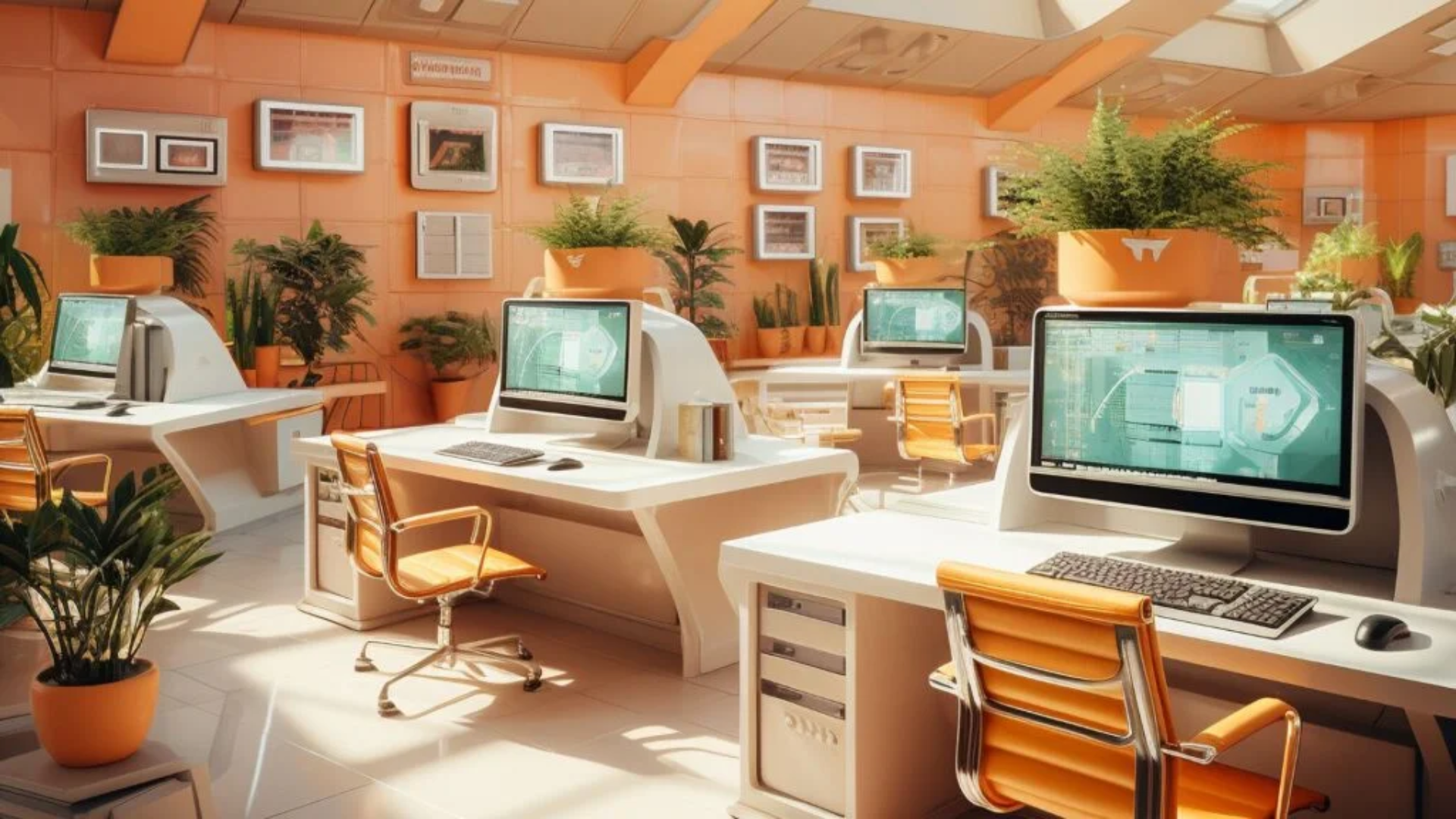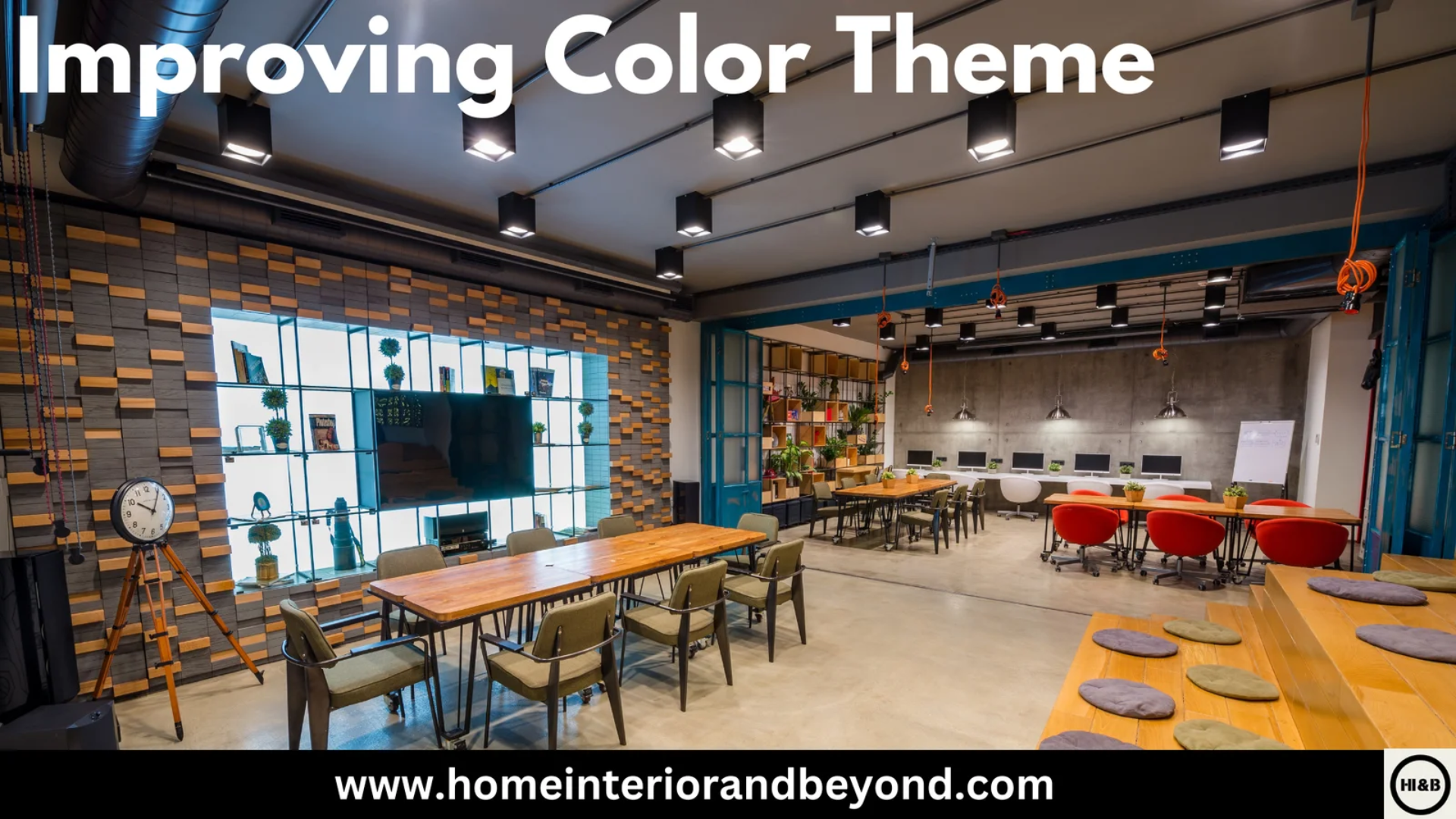Color plays a crucial role in shaping the mood and efficiency of office spaces. Choosing the right colors can spark creativity, enhance focus, and boost employees’ overall well-being. This article explores how to use color effectively in office spaces to create a vibrant and productive workplace.
1. Color Psychology
Color psychology is the study of how colors affect mood and even behavior. For example, in a workplace, some colors might trigger certain feelings or reactions. Some major colors, followed by their meanings are:
Blue:
This color is soothed, which enhances concentration and minimizes stress. It would be excellent to use in places where there needs to be attentiveness to detail and concentration.
This is intended to evoke something peaceful and natural.
Green:
Symbolizing nature and tranquility, green creates a refreshing atmosphere that can enhance creativity and balance. It’s perfect for areas where employees brainstorm or collaborate.
Yellow:
Yellow gives one a feeling of being cheerful and positive. But, on the other hand, too much yellow has the potential to cause anxiety, so it must not be there in all the office spaces but as an accent color.
Red:
An invigorating color that can pump up energy levels as well as excitement, red is just fine for action-oriented spaces. It needs to be handled with care, though red can stir up problems.
Neutral Colors:
Shades like gray, beige, or white can work for you and provide a sleek, professional feel. The colors are quite versatile backgrounds that tend to feature other colors.

2. Color Schemes that Suit Office Hubs
Company Branding:
Carry colors from your brand identity into the office. This is because having some of the company’s signature colors in the design of the office will encourage a cohesive feel around reinforcing the values of the company.
Nature of work carried out:
Consider what employees will be doing. In some cases, highly creative work calls for bright colors. Research has shown that more analytical work may work well with duller colors.
Light:
The intensity of natural and artificial illumination within the workplace will also be a factor in how colors are perceived. Test colors under realistic lighting conditions for the intended visual impact.
Size:
Lighter colors make small office areas appear larger, while darker colors add warmth to large office spaces.
3. Application of Colour in Office Areas
Accent walls:
Accent walls use bold colors to create a focal point in office areas. This could draw much more visual interest into the space without creating an overwhelming sense.
Colorful furniture:
Colorful pieces like chairs and desks introduce personality to office spaces. Choose office furniture that compliments the color scheme going around in the space.
Art and Decoration:
Art, plants, or decorative objects in bright colors may be used in offices to brighten up the atmosphere. Since the art or decoration items can easily be changed, the look of a working place may easily be refreshed.
Color Zone Coding:
The use of color can be applied to specific areas of the office to identify them, i.e., collaboration zones, quiet areas, etc. It may help guide employees and improve the functionality of office spaces.
Employee Engagement:
Should involve employees in the choice of colors. Research feedback in terms of preferred colors brings a sense of ownership and fosters more morale.
4. Effects of Color on Employee’s Welfare
Color research has indicated that it can be a great tool for employee welfare and effectiveness at work. Such offices with an attractive atmosphere created for thought, using color wisely, foster increased job satisfaction, focus, and decreased stress levels.
Conclusion
Color in an office space can significantly transform the work environment. Furthermore, a well-chosen color scheme can enhance employee satisfaction. By understanding color psychology and thoughtfully planning your design, you can effectively create a workplace that not only inspires but also motivates your team. Ultimately, the right colors can lead to a more productive and engaging atmosphere.
FAQs
How does color affect the functioning of workplace areas in offices?
Colors also may affect mood and energy levels, which in turn can shift concentration and productivity. For example, to help you concentrate more, it is great to opt for a blue color while yellow might be necessary to stimulate creativity.
What colors should be used with small office spaces?
Lighter colors such as soft whites or light grays may give an illusion of openness and bigger size to the small office spaces.
Can dark colors be utilized for office spaces?
Yes, but use the darker colors more as accents or for larger areas so as not to make the environment feel too close-in or heavy.
How can I integrate my brand colors into office spaces?
Use your brand colors for furniture, accent walls, artwork, and decorative items in order to give you a really cohesive and branded workspace.
Should I be considering employees' preferences when selecting colors?
Absolutely! Asking the office staff what colors they want may help to boost morale and make work environments more colorful.
How would I determine which colors to apply to my working space?
Consider work context, corporate branding, size of space, and psychological effects of colors. Testing colors in the actual lighting helps to finally make a decision.
How can color be added to office spaces without painting?
You could also just use colored furniture, art, plants, rugs, and other decorative elements to add color to a space without paint.




